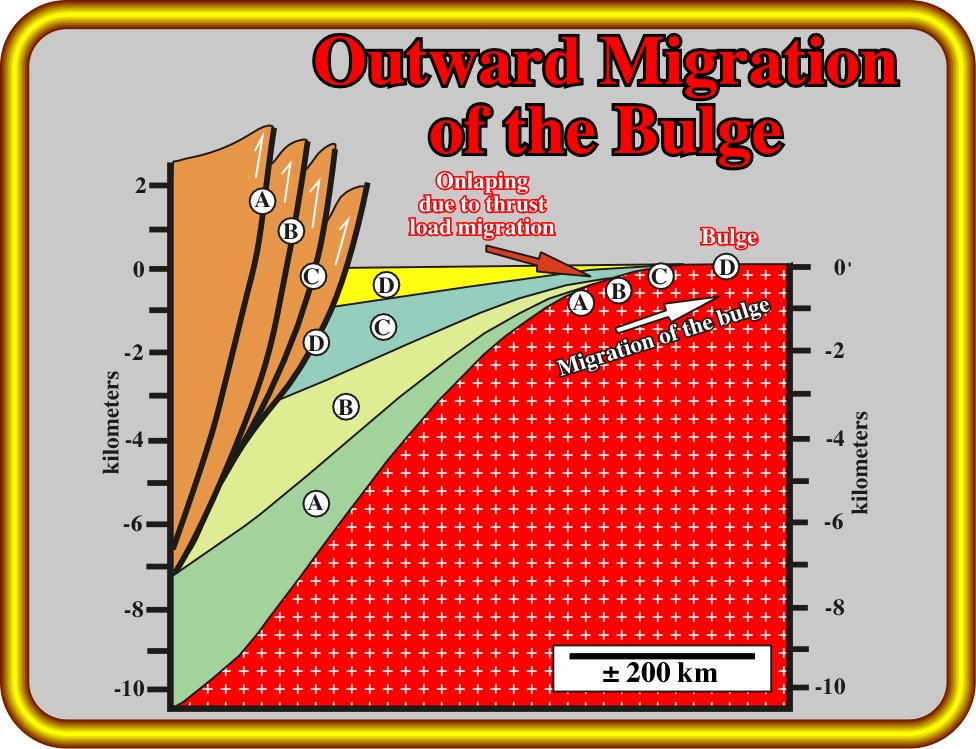
Universidade Fernando Pessoa
Porto, Portugal

Basic Principles in Foredeep & Foldbelt Basins
VIII- Migration of the Peripheral Bulge
The sketch shown in fig. 13, illustrates the stratigraphy of a foredeep basin created by the loading of four thrust complexes. In this model, the sedimentary infilling associated with each tectonic load is made in such a way that the final depth water deposition stays more or less constant. Thus, one can say that before each tectonic load, the younger chronostratigraphic line could be considered as sub-horizontal.

Fig. 13- The onlapping on the landward flank of the bulge is due to successive advancing of the thrust/fold loads. As each load advances, the sedimentary infill progressively oversteps older units and the flexural bulge migrates away from the thrust/fold front. Such a migration produces a flexural depression dominated by onlap at its edge. Note that in this geological model, it is assumed that each load (A, B, C or D) is emplaced on a constant horizontal pre-deformation surface.
However, as the tectonic loads are put in place, the sedimentary infilling progrades. As the younger sedimentary prisms outbuild over the older, the flexural bulge migrates toward the craton, i.e. moves away from the fold belt.
After four tectonic loads in sequence, where the younger is always the more distal, the result is the creation of a flexural depression of the substratum, which is preserved by downlapping of the sedimentary prisms infilling the foredeep.